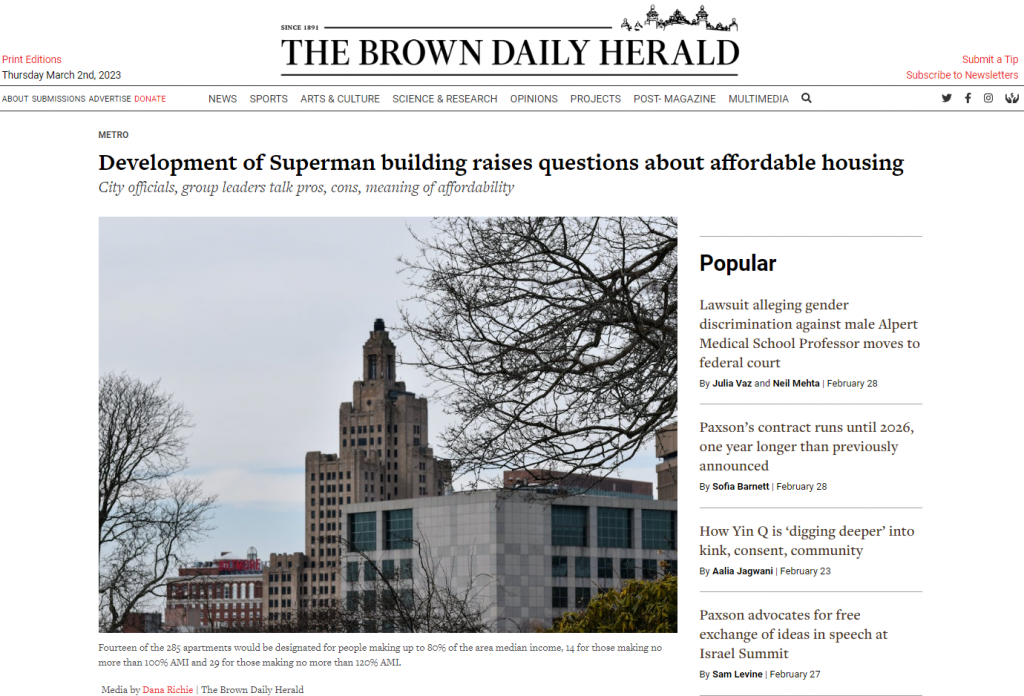Don’t confuse PRICING and INCOME TARGETING when discussing affordability. Rents for folks earning 80% of Area Median Income (AMI) can be set affordably while rents for folks earning 50% of AMI can be set unaffordably.
What is found in this piece is actually an appeal to change income targeting, not an appeal to make this project more affordable.
From the piece:
“Though these units have been designated as affordable, ‘only even a small number of those are at the 80% (AMI) level, and 80% is the highest end of what you can really call affordable housing,’ said Peter Asen ’04, deputy director of development and governmental affairs for the Providence Housing Authority.”

A link to the piece is found here




